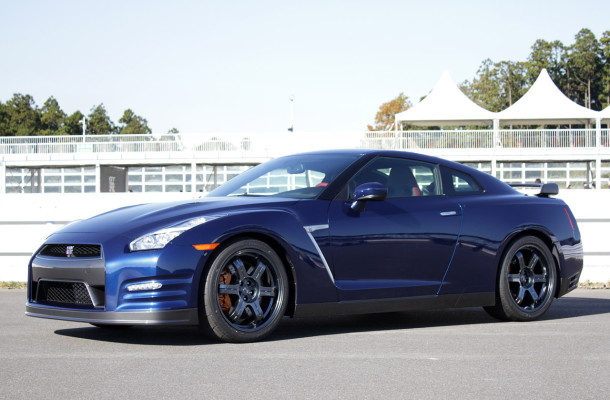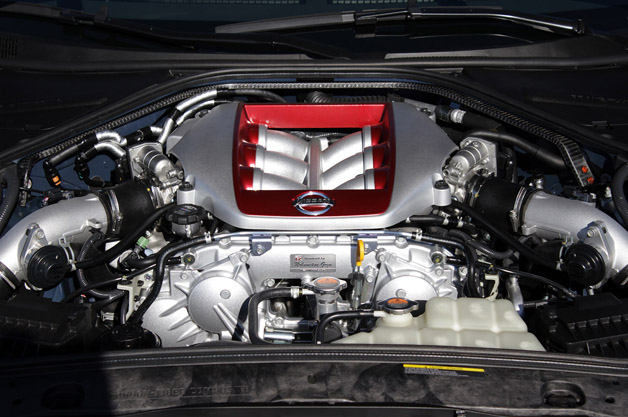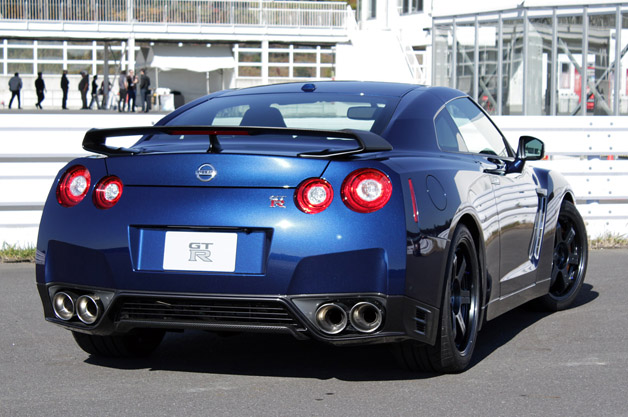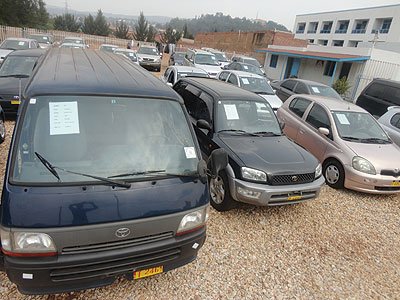2015 Nissan GT-R: A Tiger That’s Been Potty-Trained

Although the first Skyline GT-R from Nissan arrived in 1969, in the 46 years since, there have nearly been as many years without a GT-R as with. The first two generations were produced from 1969 to 1972, the next three generations stretched from 1989 to 2002, and the most recent (just plain GT-R in fact, not a Skyline GT-R) has so far run from 2009 to 2015. That’s 25 years that the GT-R has been a member of the material world, and 21 that it has lived in purgatorio.
Yet out of those 46 years, the birth of the legend and cult of the GT-R happened primarily in five: from 1989 to 1994, when a chassis codenamed BNR32 – just plain R32 to its friends and enemies – with a 2.6-liter straight-six engine, stuck a defibrillator on the corpus motorsportus and ran a 600-horsepower, four-wheel-drive, four-wheel-steered blast of “Take that!” through the heart of Group A racing.
Sure, the KPGC10 and KPGC110 won 49 consecutive races in Japan from 1968 to 1972. Sure, the R33 (1995 – 1998) ran the winning streak of the R32 out to 50 victories in 50 races in Japan’s N1 Super Taikyu series, and was the first production car to break the eight-minute mark at the Nürburgring. Sure, the R34 (1999 – 2002) was still a championship-winning car as well as the handsome, square-jawed evolution that you could finally take home to mom’s crazy sister and your Playstation-addicted brother.
But it was the R32 that won its first 29 races in Japan and took the Group A championship four years in a row. It was the R32 that earned the nickname “Godzilla” in Australia by winning the 1,000-kilometer race at Bathurst two years in a row and the Australian Touring Car Championship three years in a row before the regulations were changed to excise it from competition. It was the R32 that won its class in the 24 Hours of Spa three years in a row. It was the R32 that spawned the production Skyline GT-R, the 276-horsepower Pegasus that bestowed race-ready ATTESA-ETS 4WD (Advanced Total Traction Engineering System for All – Electronic Torque Split) and Super-HICAS (High Capacity Actively Controlled Suspension) four-wheel steering upon the common man. And it was the R32 that did all this at half the price of a Porsche, and in just four markets: Japan, Hong Kong, Australia and New Zealand. It wasn’t until 1997 that the R33 would begin to be imported to the UK.
The day after obsessively covering the Tokyo Motor Show we were given the briefest of chances to drive the new R35 GT-R and GT-R Nismo, super-coupes whose umbilici are plugged into the R32. More proof? It was the R32 that birthed the first Skyline GT-R Nismo edition, a road-legal homologation special with aero mods and one color choice: Gunmetal Grey.
Nissan said this new GT-R is more mature, and after our drive we’re prepared to admit that’s the case, as long as we define “mature.” If the previous GT-R was an undomesticated tiger, Nissan has at least taught this one not to pee on the couch or carpets. But it would still like to warn you, “Don’t make any sudden moves – that sets it off. And it can smell fear, so…”
When engineers arrived at a fork in the development road for the 2015 GT-R, they didn’t choose either path, they chose both. The GT-R had come to a point where its outright speed and ‘Ring lap time couldn’t be questioned; from a 7:29.03 in the 480-hp 2009 car, the 545-hp 2014 model had cut an 11-second chunk off of that and got it down to 7:18.60.
What was needed wasn’t “MOAR SPEED!”, but an accelerated course in finishing school. No longer the clattering, shunting mechanical bull it had been when it first arrived, buyers still had to sign paperwork at the dealer acknowledging that the coupe made an unexpected amount of mechanical noise. This was to keep them from driving their cars right back to the dealer believing they were broken just because of the built-in vehicular ruckus.
So development took the right fork, creating a hardened Nismo package that would stay hopped up on speed, and the left fork, creating a standard GT-R that would calm down, relax, chill out a bit.
In the standard car, much of the work was done on the suspension, the aim being to better balance the apportionment of load between the four wheels. It was given a longer stroke and a new front stabilizer, spring rates were adjusted, bushes were revised and the electronics controlling the shock absorber valves were recalibrated. The primary result of that was more grip, the secondary – and maturing – result was a smoother ride that didn’t need antsy hands on the steering wheel in order to keep a straight line.
Changes made to the parts of the GT-R you can see are few and mainly cosmetic.
A new steering pump was installed that eased the force required for low-speed maneuvering. Braking gets a more linear response and better modulation. Body stiffness in the rear is increased through better manufacturing processes and even more accurate fitting. The 20-inch Dunlop Sport Maxx GT DSST CTT tires have a new compound, stiffer sidewall and a stepped tread block to cut down on road noise. The cabin benefits from about 22 extra pounds of sound-deadening material to shield it from that formerly boisterous driveline, and Active Noise Cancellation can be had if buyers order the Bose audio system.
With the focus on civilizing, changes made to the parts of the GT-R you can see are few and mainly cosmetic. The functional difference is a new headlight cluster with an Adaptive Front Lighting System that now includes four LED lamps – three low-beam and one high – accented by a dog-legged LED DRL. Beyond that, the four rear lights go from dotted LEDs to continuous strips, the side vent gets a different flourish, Gold Flake Red Pearl is the new exterior color (if you look closely at it you can see gold-tinted glass flakes), there’s a pale ivory interior available and more stitching on the seats and around the shifter. Order the Black trim and you get a dry carbon rear wing mounted to a carbon trunk that shaves half the weight compared to the aluminum decklid.
Down that right fork you’ll find the GT-R Nismo, the third Nismo-fied GT-R in the car’s history after the original R32 and a 400-hp R33 Nismo 400R from 1997 (we’re not including the R34 Z-tune, which was built by Nismo but remains a beast with a different philosophy). This is the 600-hp mercenary with 481-pound feet of torque that will take any job that makes it go faster.
Its body has been stiffened through the use of additional adhesives on the bodyshell around the door and backlight openings. Under the hood are two larger turbos from the company’s GT3 racing program, better ignition timing control and a larger fuel pump. Getting that extra 55-horsepower to the ground is a suspension that has been comprehensively revised from the damping force control units on the custom Bilstein DampTronic dampers to its links, high-rigidity wheel-hub bolts and bespoke Dunlops.
It has a new, slightly wider front bumper, a strake on the cover under the engine, a larger rear spoiler and a longer, tapered rear end that adds 220 pounds of additional downforce at 186 miles per hour versus the standard car. And a Dark Matte Grey, the evolution of that old Gunmetal, is among its exterior palette of five colors. Those are the features – aided by an even sharper track package that will be available for the production car but that hasn’t been officially announced and detailed yet – that helped it wallop the ‘Ring in 7:08.679. And if you believe the insider info at Car Guide, it will hit 62 mph in 2.08 seconds.
Inside are all the daily-driver race car features you expect from such an offering, like carbon-fiber-backed Recaros, Alcantara everywhere and a steering wheel dressed in Alcantara and a centering stripe.
Regrettably, the bifurcation of the GT-R line was a story we mostly had read to us and got little time to actually experience. Our stint in the more refined, standard car lasted for all of 30 minutes on smooth Japanese roads and we were held captive by a top speed of 80 kmh (about 50 mph). We haven’t been inside a GT-R since 2008, when we drove the very first edition for a few laps around the Estoril circuit in Portugal, and our strongest memory of that is thinking, “No wonder these are getting hurled into buildings and ditches.” In that car, being at the limit meant you had already exceeded your own limits because the computers were doing so much for you and allowing you to think you were in control. So, more accurately, when the computers had reached their limits, well, computers are binary; as with a real PC, the automotive equivalent of The Blue Screen of Death didn’t come with a gentle warning and a countdown timer.
We call the 2015 car a potty-trained tiger because there’s a millimeter-thin veneer of Sentra in steady-state, straight ahead cruising. The standard GT-R has a surprisingly thin steering wheel (unlike the pictured Black Edition), thinner than that in a 370Z. Drive it like a Sentra and it will practically behave like one – just swap the Sentra’s economy engine note for tire noise and the slightest hints of driveline workings. Even the first few degrees of steering lock and brake pedal travel are thoroughly common.
Get past that veneer – which is easy to do because, remember, it’s only a millimeter thick – and there’s that slightly tamed big cat. Turn the wheel quickly more than ten degrees and the car doesn’t turn, it pivots. Get past that initial brake pedal travel and, while response remains linear, it is nearly as stiff as the pedal in the Ferrari F1 simulator in Maranello, the one used by Fernando Alonso and Felipe Massa, a fact we’re clear on because we were in that very simulator two months ago. Put the squeeze on the throttle and it’ll drop two gears and bolt like it’s afraid for its life.
It’s supple enough, but it’s more firm than supple. Even though it wasn’t as composed or refined as the (more expensive) Porsche 911 GT3 we recently drove, we’d happily run it from LA to Vegas or Phoenix and enjoy that particular through-line of bass in its ambiance that signals powerful, and powerfully fast possibility. It’s not distractingly noisy at all, but it sounds like the modern yet hardcore sports car that it is, the one that can do the 0-to-60 mph sprint in less than 2.7 seconds (that’s the time for the 2014 model; Nissan hasn’t released a 0-60 time for the 2015 yet except to say it’s faster). What was perhaps most instructive was listening to other journos with experience of the R35 evolution talk about how refined this new car is. Every single time, the answer to our question, “Is this more refined than the current car?” was, “Oh yeah.”
To us, it’s an animal, but apparently it’s one that has finally been taught how to stop snarling and bucking at the leash when it’s just being taken for a walk.
If you’re blessed with outstanding reflexes, you can get the GT-R Nismo to behave with an adroitness that belies its heft.
Image Credit: Copyright 2013 Jonathon Ramsey / AOL
News Source: Autoblog
























